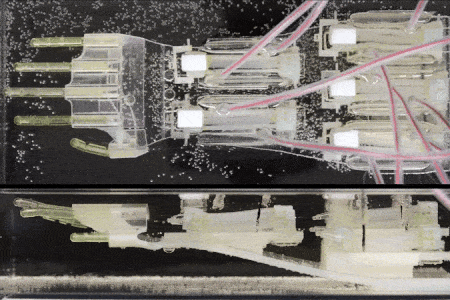The Australian Transport Safety Bureau has released the preliminary report from its ongoing investigation into the collision with terrain of a Lockheed C-130 large air tanker during aerial firefighting operations north-east of Cooma, NSW on 23 January 2020, in which three aircrew were fatally injured.
The preliminary report details basic factual information established in the investigation’s early evidence collection phase, including the accident’s sequence of events, wreckage and impact information, and weather details. The preliminary report also confirms that ATSB data recovery analysts were able to successfully download the C-130’s cockpit voice recorder (CVR).
“Although the recorder assembly was damaged in the accident, ATSB investigators were able to successfully recover all the data from the CVR’s crash protected memory module,” said ATSB Chief Commissioner Greg Hood.
“However, unfortunately the CVR had not recorded any audio from the accident flight. Instead, all recovered audio was from a previous flight when the aircraft was operating in the United States.”
The aircraft had been in Australia since November 2019, and why the CVR did not record the accident flight will be considered as part of the ongoing investigation.
“Audio from cockpit voice recorders often play an important role in aircraft accident investigations, however, our investigators do have a range of other evidence, including witness videos, at their disposal in building a comprehensive understanding of the accident sequence,” Chief Commissioner Hood said.
As the investigation continues, the ATSB will complete its teardown and inspection of the aircraft’s engines and propellers; review the aircraft’s maintenance history, and performance and handling characteristics; analyse witness reports; and develop a more comprehensive understanding of the accident impact sequence with the use of 3D drone mapping and video analysis of witness videos.
“The ATSB’s on-site examination of the wreckage, damage to the surrounding vegetation, and ground markings indicated that the aircraft initially impacted a tree in a left wing down attitude, before colliding with the ground,” Mr Hood said.
The investigation will also consider environmental influences; the crew’s qualifications, experience and medical information; the nature of aerial fire-fighting operations; and operating policies and procedures.
“ATSB preliminary reports do not contain findings, identify contributing factors or outline safety issues and actions, which will be detailed in an investigation’s final and any interim reports,” Mr Hood said.
“An investigation of this nature and complexity may take more than 18 months to complete.
“However, should any safety critical information be discovered at any time during the investigation, we will immediately notify operators and regulators, and make that publicly known.”
Mr Hood again extended his sympathies to those affected by this accident.
“On behalf of the ATSB, I convey our sympathies to the families and friends of the three aircrew who lost their lives in this accident in the service of others,” Mr Hood said.
“The ATSB would also like to acknowledge the support of the NSW Police Force, the NSW Rural Fire Service, NSW Fire and Rescue, the Australian Defence Force in facilitating safe access to an active fire ground and supporting our on-site investigation team. We also acknowledge and thank the warm-hearted support of the communities of Peak View and Cooma during the ATSB’s extensive on-site deployment.”
You can find here the preliminary report





